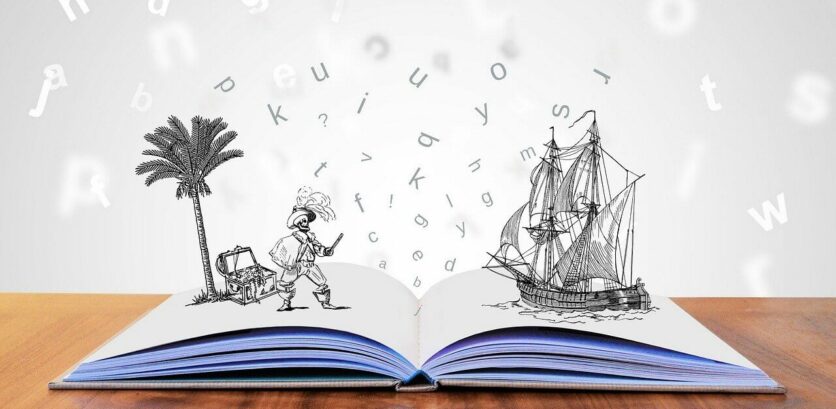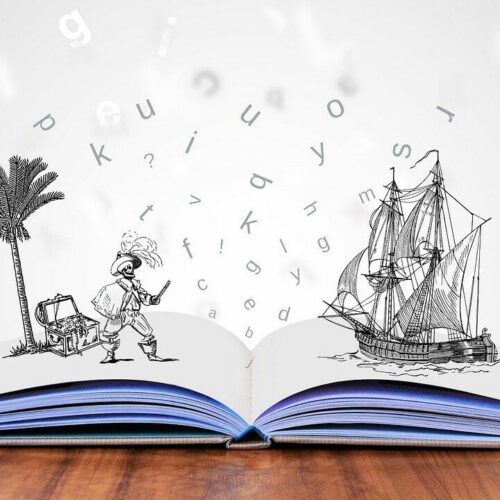You’re never too old to read children’s books. They teach as much as adult literature: how to grow as a person, learn from your mistakes, respect others and that life is not as bad as you thought it was
Ian is a British journalist and editor based in Yorkshire with a deep interest in words, culture, data and how people talk to each other. He has a cat called Susan and rows on the River Aire.
The joy of rediscovering children’s books
I have a Holy Grail that I’ve been seeking for years. It’s a book titled A Boy Called Spoons. I have never owned a copy.
In fact, I have never read it! It was read to me and my classmates in primary school by an inspirational teacher who sat us down every Friday afternoon and read a book to us. I did not read it then as a little boy because I couldn’t. You see, I did not learn to read until I was 10 years old. Was I dyslexic? We didn’t talk about those things in the 1960s—and everyone had marked me down for manual labour as a career.
But even then, I loved A Boy Called Spoons. The eponymous Spoons, with his large ears and talent for eating, never really succeeds at anything. However rapidly his spoon whizzes from plate to mouth he always stays as thin as a beanpole; however hard he tries to save up for a bicycle, he never has enough money to buy one, and however much he believes that a stone he throws in the air should stay there, he just cannot make it happen.
Spoons has so much boundless energy, curiosity and enormous enthusiasm for money-making schemes. Of course, he never manages to make any, but his ideas are always ingenious. At one point, he charges his friends five pence each to listen to the astonishing snores of his grandfather. He was me! A little boy with big dreams and modest ambitions.
A German masterpiece
Researching the book recently, I was astonished to discover that A Boy Called Spoons was written by Herbert Heckmann and originally published in German. Good! I like that! I can find no copies online, so if any kontextor readers have a copy, I’d be happy to purchase the English version from you.
Back to the little boy in 1974: something clicked, and I started to read. I was voracious with daily visits to the library (a great institution) for entertainment, knowledge and inspiration.
At university, I studied English Language and Literature, but the seeds were sown with children’s books. I have read books in Middle English and Icelandic, prose and poetry from Chaucer to Shakespeare, Hardy and Heaney. But, to this day, I still go back and read children’s books.
This is a mean definition as it seems to banish adults from reading them again when they leave childish things behind. I love reading “childish” books. They teach us so much more than high adult literature: how to grow as a person, learn from your mistakes, respect others and that life is not as bad as you thought it was in this big, bad world. Children’s literature teaches you that, despite everything, life is good.
Top ten reading list
So here is my top ten reading list for adults wishing to learn something from their own infant reader. Enjoy.
Three Little Grey Men by BB is the first book I sat down and read from end to end as a little boy. The story is about last gnomes in Great Britain who live beside Folly Brook in Warwickshire. They are named after the flowers Baldmoney, Sneezewort, Dodder and Cloudberry. It is a complete joy even now.
Emile and the Detectives by Erich Kästner is a 1929 novel set in Berlin. It was Kästner’s first major success and the only one of his pre-1945 works to escape Nazi censorship. The book was immediately popular, and the original version sold an initial two million copies.
The Weirdstone of Brisingamen by Alan Garner is a novel that takes the local legend of The Wizard of the Edge as a partial basis for its plot and is influenced by the folklore of Alderley Edge in Cheshire, England.
Skellig by David Almond is about ten-year-old Michael and his family, who have recently moved into a house as his new baby sister may not live due to a heart condition. When Michael goes into the garage, he finds a strange, emaciated creature hidden amid all the boxes, debris and dead insects.
The Eagle of the Ninth by Rosemary Sutcliff is a story set in Roman Britain in the second century AD, after the building of Hadrian’s Wall. Just read it—you’ll learn something about history and human perseverance.
The Little Prince by Antoine de Saint-Exupéry Despite its style as a children’s book, The Little Prince makes wise observations about the perennial concerns of life, adults and human nature.
Frog by Max Velthuijs has pictures and a few words! Frog books have been translated into more than 50 languages. So far, eight titles have been translated from Dutch to English. Start with Frog and the Stranger and Frog is Sad.
Tom’s Midnight Garden by Philippa Pearce is about Tom, a modern boy living under quarantine with his aunt and uncle in a city flat. At night, he slips back in time to the old garden where he finds a girl playmate named Hatty. Beware: Tom’s Midnight Garden will make you cry.
The Moomins by Tove Jansson involves a family of white, rotund fairy tale characters with large snouts making them resemble the hippopotamus. However, despite this resemblance, the Moomin family are trolls. They are a loving, caring family. What’s not to like?
His Dark Materials by Philip Pullman consists of Northern Lights, The Subtle Knife and The Amber Spyglass. It’s a theological masterpiece with a nod to Milton’s Paradise Lost.
Bedtime reading
Many of us return to children’s books when we have children of our own and rediscover them when reading bedtime stories. My children are all grown up now and live far away in Edinburgh and London, but I still like reading children’s books as nourishment for the soul, even if it’s something as simple and innocent as AA Milne’s Winnie the Pooh.

